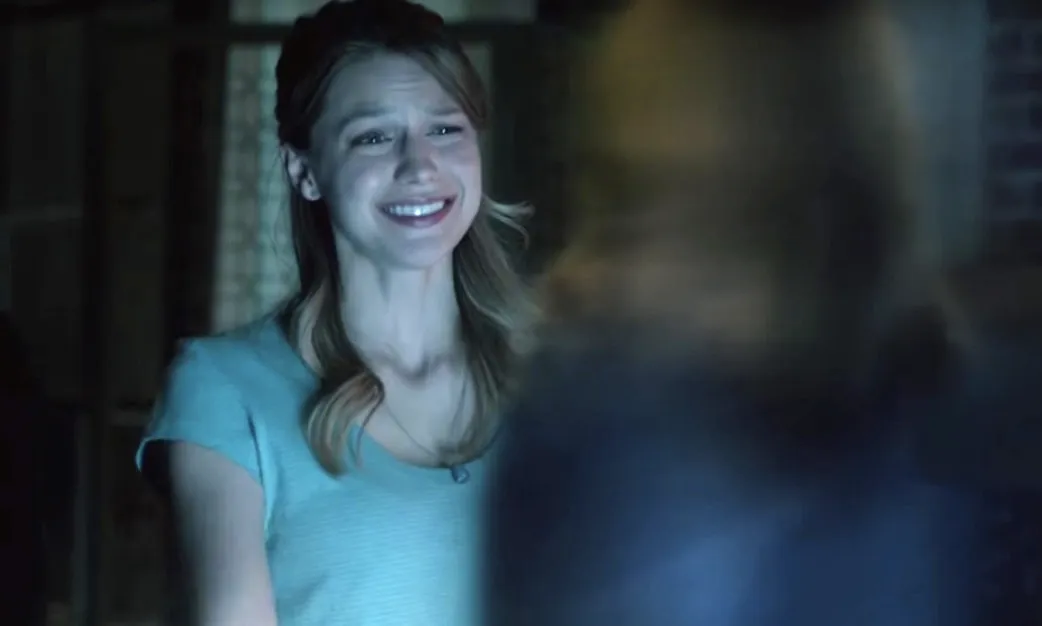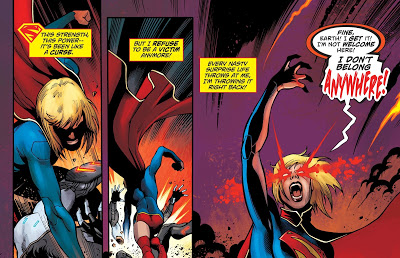This post was originally published on Read ‘Em & Weep. It has been reposted here with permission.
I watched the Supergirl pilot last night. Mostly, I liked it. There’s a lot to be said about the show, positive and negative, and certainly some judgments should be put off until they have a few more episodes under their House of El coat of arms and find their feet (so to speak).
But given what I’ve discussed on Read ‘Em & Weep!, I would be remiss not to mention immediately: here we have the rare, and well-done, example of the Maternal Narrative for a major superhero.
Conventionally, Kara Zor-El owes most to her father Zor-El, brother (and thematic twin) to Jor-El, Superman’s father. In the earliest version of Supergirl as an ongoing character, Zor-El was, like his brother, a brilliant scientist. He saved Argo City and its inhabitants from the destruction of Krypton, and when even that remnant was doomed, he put young Kara in a spaceship he had created and sent her to Earth. Her mother did nothing of note, and the amount of thought that went into her characterization can be seen in her name: Alura. She was alluring. Presumably, that’s why Zor-el married her. We get it. (Later, it turns out that Zor-El also invented a Survival Zone Projector, twin to the Phantom Zone Projector, and saved himself and his wife.)
On Earth, Superman immediately takes charge of his younger cousin, insisting she not use her powers in public, treating her as his “secret weapon,” and subjecting her to a series of tests (which she undergoes willingly or unwittingly) before he permits her to take on a public role as Supergirl. She accepts this with little or not complaint—he is, after all, an older male relative, and therefore in loco parentis.
Subsequent iterations of Supergirl rearranged a lot of these details, but Zor-El’s preeminence was rarely threatened. Alura did get her shot in the New Krypton arc of Superman stories (2008-2009), ruling the Kryptonians of New Krypton after her husband’s death, warring with Earth, and generally being unpleasantly aggressive. (Yes, I would use the same phrase for a man in her position. and I feel like I should add, “Not that there’s anything wrong with that….”) In my opinion, the story was a disaster on several levels, especially showcasing Superman’s utter failure—finally given a second chance to “save Krypton,” he bungles it completely, a fact that leaves him oddly unaffected. Alura dies along with virtually all the other New Kryptonians, and this more commanding and influential depiction of her sinks without a ripple. (Fun Fact: Zor-El has his own Wikipedia page. Alura appears in the List of Minor DC Characters page.)
If I remember the origin of Supergirl in The New 52 correctly, Zor-El—although very different in personality—once again builds a spaceship and sends Kara off in it. I believe Alura was a little more active than usual, fighting violently with her husband to stop him. It didn’t make much of an impression on me. In any case, Zor-El survived in an amnesiac state as the supervillain Cyborg Superman, so he’s still around. Alura? Not so far.
The TV pilot takes a completely different approach that centers on Alura and her relationship with her daughter, Kara. It appears that Zor-El is still a scientist and built the spaceship, but in the departure scene, Alura seems to be calling the shots; she has the plan, and she’s explaining things to Kara. Years later, when the inevitable hologram-from-Krypton appears, it’s Alura talking to Kara about her hopes for her daughter and her pride in her.
In addition, the pilot introduces Fort Rozz, a Kryptonian prison for both Kryptonian and non-Kryptonian prisoners, which somehow followed Kara from Krypton and in and out of the Phantom Zone to Earth. The prisoners want revenge on Alura, because she was the judge who sentenced them to Rozz; with her dead, they’re willing to take it out on her daughter. (Of course, if Alura hadn’t stuck them in that prison, they’d all be dead now, but a philosophical take on fate isn’t common among supervillains.) The general who leads these superpowered criminals? Supergirl’s aunt, Astra, the twin sister of her mother.
This is the unusual Maternal Narrative, in which that hero’s mother is the stronger influence on the hero and her journey. Her father, a perfectly decent and competent individual, simply receives less attention and emphasis, and Kara’s connection from her mother to her aunt—another female relative—provides key plot materials and, presumably, the series’ Big Bad.
On top of this, Kara’s closest relationship is to her human sister (by adoption) Alex, and Kara’s boss, Cat Grant, is a powerful woman whose demands and expectations will also affect Kara’s life and career, both at CatCo and as a superhero. Combining all this, we have a show that—although it includes significant male characters (Winn Schott, James Olsen, Hank Henshaw, and the oft-mentioned but absent Big Guy)—places the hero’s mother in a position of primary importance and uses the relationships of the hero to her mother, other female relatives, and women in general to inform both the narrative and characterization. And it passes the Bechdel Test multiple times in a single bound! Or episode.
Now, I wouldn’t say that the show’s creators are necessarily in the business of interrogating gender norms. It’s more that they’re inverting some of them, as a way to distinguish Supergirl from her better-known cousin. In many versions (particularly movies and TV shows), he is shown reacting to, and interacting with, a projected version of his dead father. They didn’t want to duplicate that too obviously, so they used her mother instead, but I don’t think that was their sole motive. In any case, they have created a truly female-centric superhero show—not just in terms of the sex of the protagonist, or in the character count, but in making relationships between women central to the show. Good on you, Supergirl!
Of course, it’s still Kara Zor-El and the House of El. I think just about every world in the DCU uses patronymic lineages. It’s like a law of physics. 
I have my concerns about certain aspects of the show. The use of Fort Rozz as a Villain of the Week machine seems very contrived, especially since the violent, angry, superpowered villains have for some reason chosen to remain hidden until just right now. (I imagine we’ll get some explanation related to the plans of General Astra. We may even get a reason why a physical, maximum-security prison wound up in the Phantom Zone.) I found the introduction of the high-tech, top-secret government Department of Extranormal Operations—with its control panels, its tough, untrusting commander, its key agent with mixed allegiances—to be flat and overly familiar. (I also find the fact that Alex has been feeding information about her sister to a government organization for years, while hiding that fact from Kara and lying to her about what she does for a living, to be more disturbing than the show treats it.)
Additionall, the constant references to The Hero Who Must Not Be Named are going to get old fast, and raise questions the show may not be ready to answer. It’s 2015, and both Kara and Clark can fly faster than sound. They are the only two people in the world (that they know of until now) who share certain experiences, issues, and powers. What—they don’t call, they don’t Skype, they don’t visit? Surely, she’s going to tell him about Fort Rozz, and the presence on Earth of her evil, Kryptonian, superpowered Aunt Astra, and he’ll want to help! Right? The answer to this is presumably dictated by CBS, but providing an explanation that works within the show may be a different matter.
But you know what? It’s only been one episode, and I like the show, for more reasons than just seeing the Maternal Narrative surface on mainstream TV. I particularly like the fact that this Supergirl is a friendly, kind person who enjoys using her powers and delights in helping people. I hope they keep this up. It bucks the trend of many modern superheroes, who are lost in grim-n-gritty angst. The Supergirl of The New 52 was defined by her alienation, her emotional distance from her cousin Superman, and ultimately her anger to the point where the writers felt that it made perfect sense for her to become a Red Lantern, and for some reason she doesn’t have her own comic anymore, or even belong to a team that does.
I like this one better. I’ll keep watching.
Doctor Bifrost is a software engineer, writer, reader, activist, and big-time nerd. He was brought up on The Lord of the Rings, The Left Hand of Darkness, Greek & Norse mythology, and comic books, which he’s been reading since he was four. He’s still running a D&D game he started in 1982. Doctor Bifrost enjoys well-thought-out world-building and nice merlot. He can be reached at DoctorBifrost@gmail.com.
—Please make note of The Mary Sue’s general comment policy.—
Do you follow The Mary Sue on Twitter, Facebook, Tumblr, Pinterest, & Google +?









